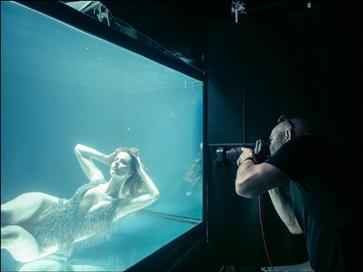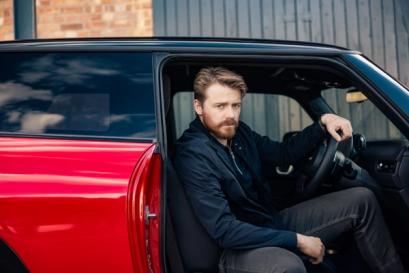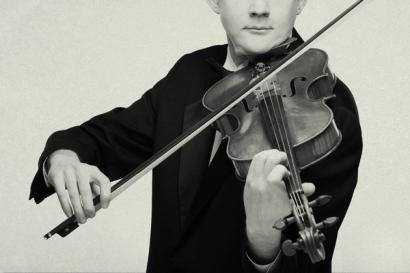

How Glass Animals' galactic-inspired tour was brought to life
The tour's set designer and video content designer reveal how they took the ambitious set of live shows from mood board to reality
- Words: Aobh O'Brien-Moody
- Photography: Ed White
The second half of 2024 saw the BRIT Award-nominated band Glass Animals embark on their global ‘Tour Of The Earth'. In collaboration with the band's frontman, Dave Bayley, the tour was brought to life by set designer Cassius Creative and video content designer Fray Studio.
The result was an ambitious ‘retro-future’ aesthetic and otherworldly atmosphere that involved a set with synchronised screens and controls and a massive chromosphere inspired by Moonraker that transforms into planetary rings mid-show. Dave Bayley himself becomes entwined with the show’s narrative, using a floating lift to ascend above the stage, heightening the galactic theme.
Gentleman’s Journal caught up with Cassius Creative and Fray Studio for a behind-the-scenes run-down of how the tour was brought to life.
A: How did this collaboration with Dave and Glass Animals come about?
C: Cassius worked with Glass Animals on their last campaign, Dreamland and then in the last throes of the Dreamland design, the last show they did, we bought on Fray to do some additional video content for that, so that was back in 2022.
Once this new campaign came around, I was approached again to work with them. Dave works very collaboratively. He's probably the most visual of any of our clients that we've worked for. So we already had a relationship there, and he would come to us with a load of mood boards and imagery and very specific references, but also you never really know where it's going to go. And it being space-themed, that sort of retro futurist theme, video content was always going to be a big part of it. So Fray came on and did the visual side of it. From there we developed it almost side by side, the set and lighting and video all came together equally.
A: What was the design inspiration behind this particular set of live shows?
C: The album has got a bit of a space theme to it. I mean, the album’s called I Love You so Fucking Much and that could be directed at someone specifically, but also could be wider, like talking about everyone and the world and beyond.
So yeah, it has a loose space theme, and is a bit darker than their previous record, Dreamland, which was, in terms of visuals, lighter, more pastels, kind of almost slightly friendlier, more heavenly. And this new one is darker, more isolated, the music's more expansive, but it still has an element of fun. So that’s where the retro element comes into it.
There were lots of scenic references thrown around, whether that was old original Star Trek references, or old photos of NASA control stations. And then through to product design, Dieter Rams, that style of product design – curving off the corners, keeping it quite limited. Dave’s got such a broad, eclectic range of references that you never know where you're gonna end up at the other end, but all these things just get mashed together, and the overall production design comes out the other end.
F: Yeah, and I was definitely the same. In the video content, there's a lot of inspiration drawn from Hitchhiker's Guide to the Galaxy, both the books and the overall universe, but also the BBC TV series from the 70s and early retro video games and computer graphics.
We were trying to find a visual language that was reminiscent of the 70s and 80s, but made suitable for quite a young audience, and a modern audience who wouldn't necessarily understand all the references from the 70s and 80s. Like, how do you take new, modern elements and modern interpretations of that time period to make it make sense?
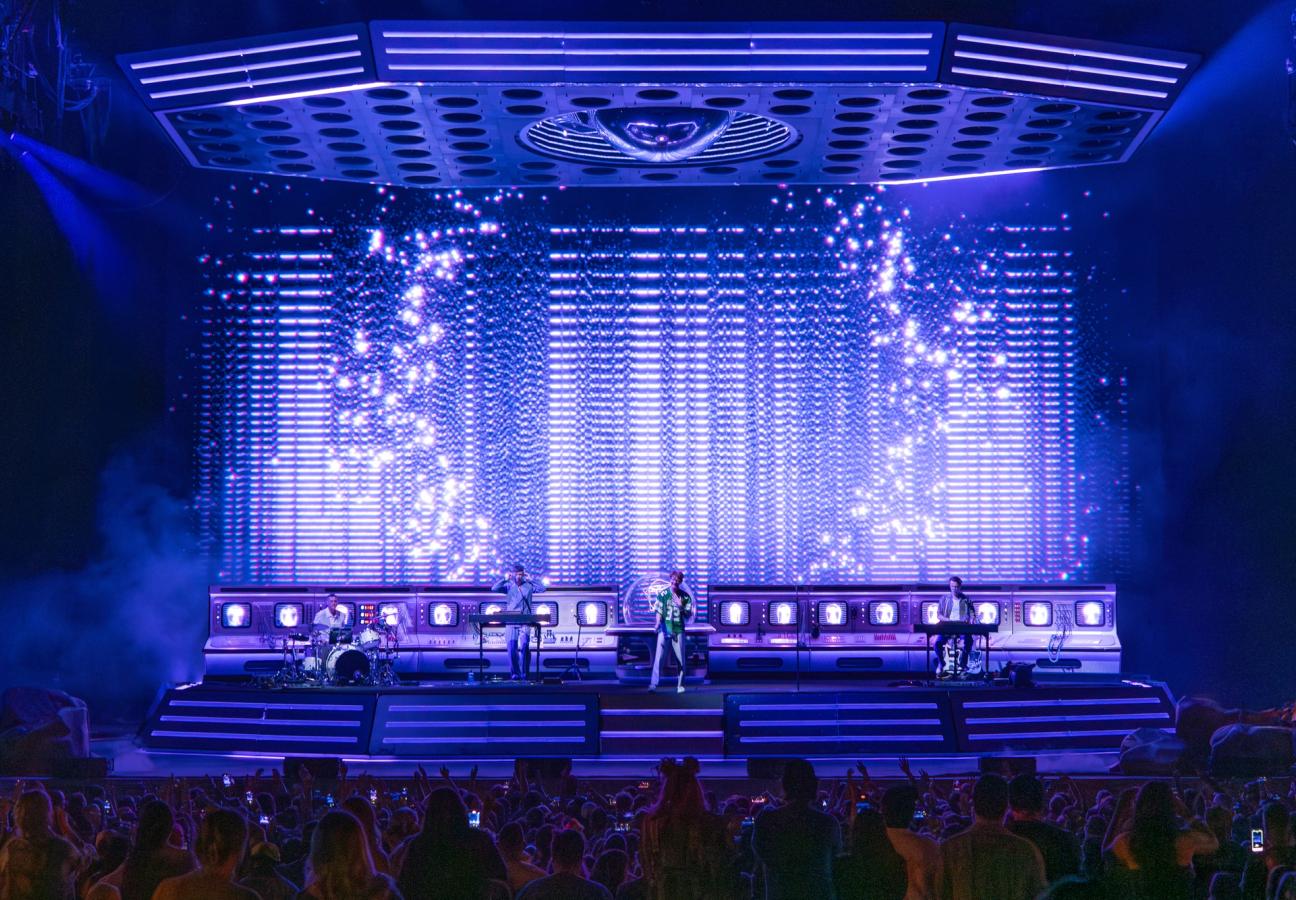
A: Did you have an atmosphere in mind that you wanted to create when you first set out?
C: Yeah, it needed to have a dark, expansive space feel. Like there’s a moment where Dave goes up on the lift and it's just surrounded by stars. But it still does have to have a sort of tongue-in-cheek element to it. Something that allows us to go to dark and moody places, but then also, there’s still lots of fun.
F: And being able to pepper the show with Easter eggs, references from old albums and previous shows, just slipping things in that fans will pick up on.
A: Glass Animals has such a loyal fan base, so you’re probably trying to appeal to them while keeping things fresh?
F: Yeah there’s a really dedicated Reddit community who really, really got into this show. It’s definitely the one show where everything you put on screen is kind of, like, forensically picked apart, and the meaning behind it is absorbed.
A: What did you want the ultimate reaction from the audience to be?
C: They did Madison Square Garden and the Forum in LA and then the O2 in London, so on a purely logistical level, they’re the biggest shows the band have done in their career. So we certainly wanted to make a statement in terms of giving them the best production they’ve had. But we also just wanted it to feel quite immersive and we wanted the audience to feel transported. Glass Animals always want to build worlds, they’re quite a concept-driven band. So, I think they wanted to create this new world and to bring the audience on a weird journey to space.
A: How did you navigate that tension between being ambitious and remaining realistic and practical?
C: You kind of just have to put everything out there. Like the whole lighting rig in the roof is not just lights on bits of metal like regular shows, it’s this big scenic piece, this big geometric roof. And so that obviously costs a lot of money to make, and takes up a lot of space and time and people to put it up, and it’s heavy. But if you present that in the right way, and you realise that that’s kind of the fundamental visual piece of the show, then the band are open to it. So it’s about making sure you make the best impression in the right way and spend your money wisely. Keeping one foot in the real world.
F: From a video point of view, they are probably the one band who – Dave in particular – is kind of open to any random idea that most people would run away from. You could mention something like video background removal, a tool that we use to live-cut people out of live camera feeds, to be able to replace the background – it's not something that people would necessarily want to use in a show, because it is still quite experimental – it’s the type of thing that you mention to Dave, and the next time you talk to him, he knows more about it than you do, because he's gone away and researched it and read everything he can about it, and comes back with his own ideas based on what he's found. So it's quite freeing, in that way, to kind of be able to do those, like, almost technical experiments and creative experiments, and see what works and what doesn't.
C: The band are extremely technically savvy.
F: A lot of the video content is driven directly by them because every instrument on stage and every button or kick drum will generate MIDI notes that directly control what's happening on the screen, so like, if they stopped playing, then in some instances the content would just stop, because we are entirely reliant on what they're doing on stage to drive the video content that's running in real time.
A: Does working like that lend it an element of risk?
F: It's definitely a different way of working, because on some tours, we would just deliver 24 files, and then there's just one track for a song, whereas this show had 23 different screens on stage, and each song has to be split into different parts. So there are a good 3,000 or 4,000 video files that make up the show. They just have to be carefully pieced back together and manually triggered.
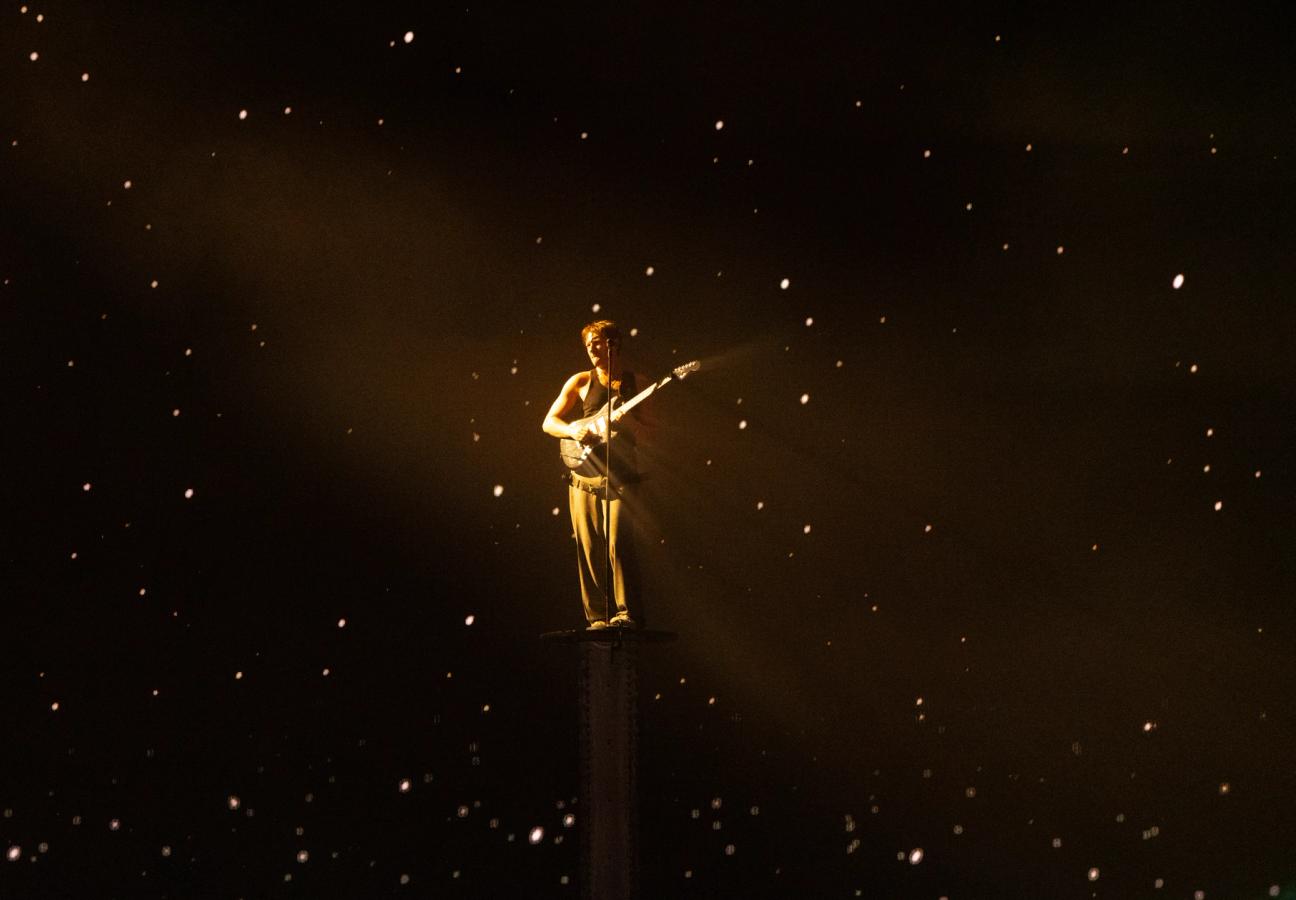
A: What were the main challenges you encountered along the way?
C: I mean the big ones, time and money. Time was quite tight. We needed to rehearse it in the UK and then send it to America, so our time frames were kind of squeezed right down, which, considering the amount of stuff there was to physically make – there’s a lot of set elements with a lot detail in all the pieces – the switches and knobs are all real and all of that needs to be installed and fabricated.
F: We have a team of 11 people animating and making the show and one of the big challenges across every show, particularly this one, is finding a unified visual language that everyone understands and everyone can work to. So it looks like at the end of it, the show has come out of one person's mind, rather than 11 individual people's minds. And particularly on this show, it was quite challenging, because we had some very young people on our team, and some who are much older, who actually did experience the 70s and 80s firsthand. So they were bringing one set of references – a real reference – and then the younger people were bringing, like, almost an imagined reference of the 80s. And it was interesting to work out how to kind of combine the two pools of knowledge and push them into the one, which ended up being a created version of the 70s and 80s.
For more music, read our interview with singer, rapper and drummer Anderson .Pakk...
